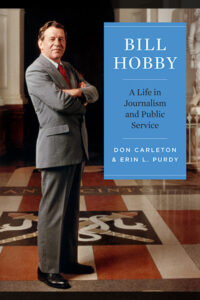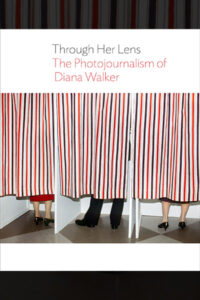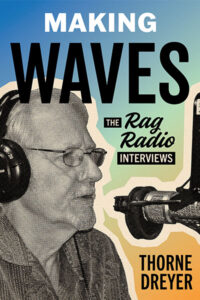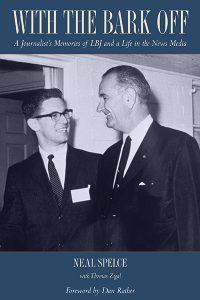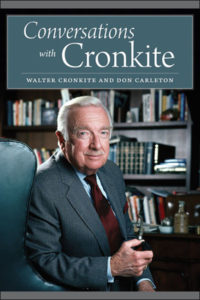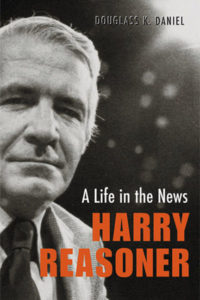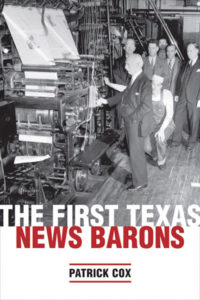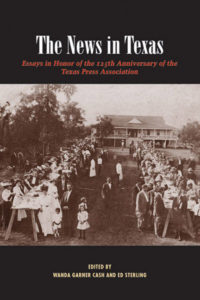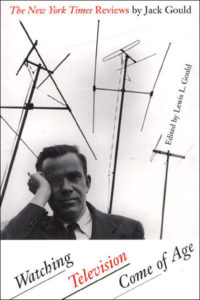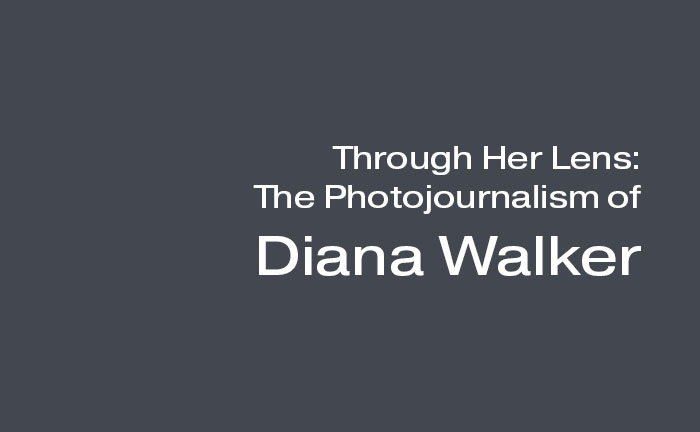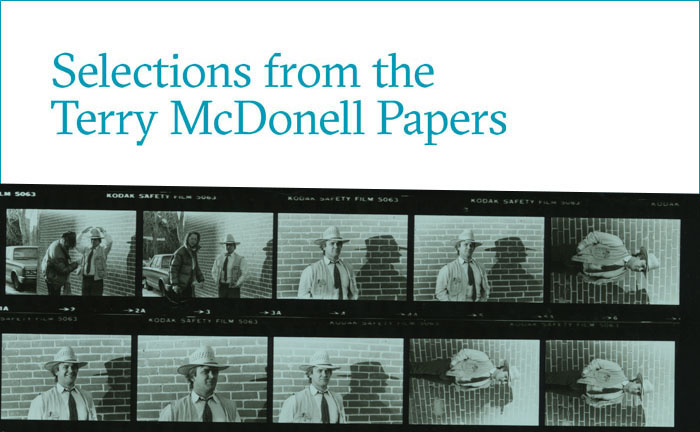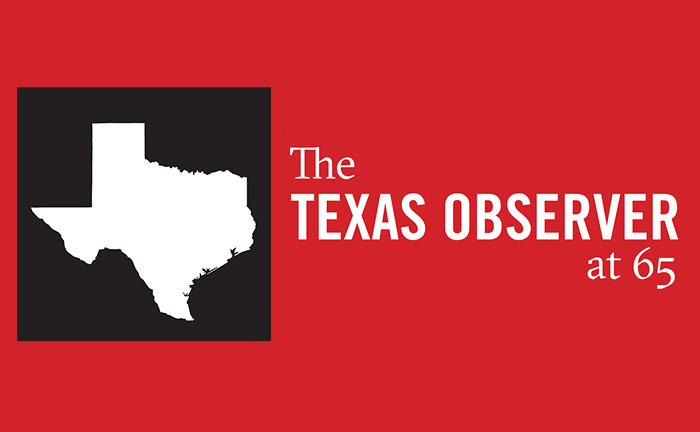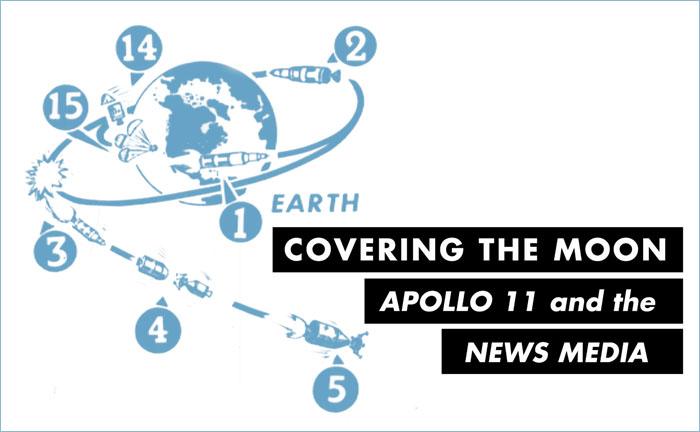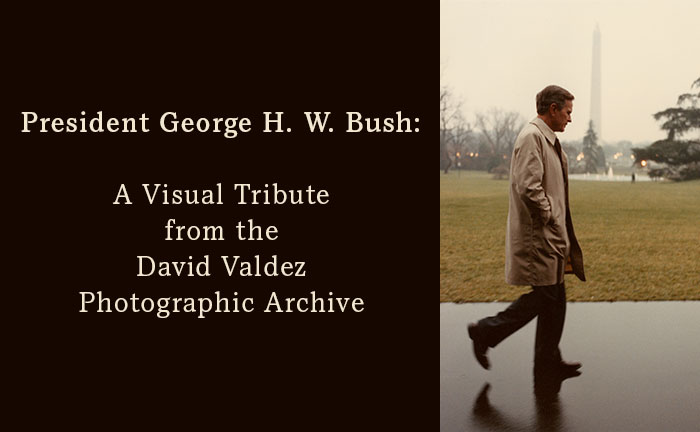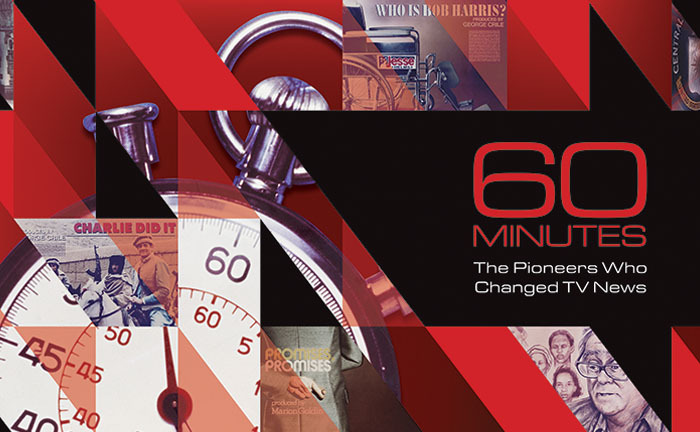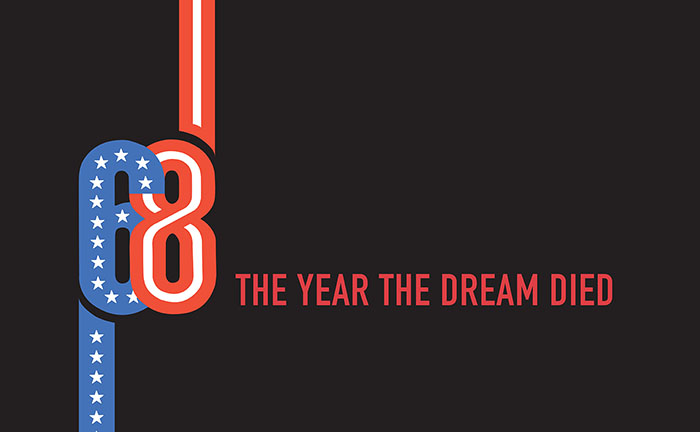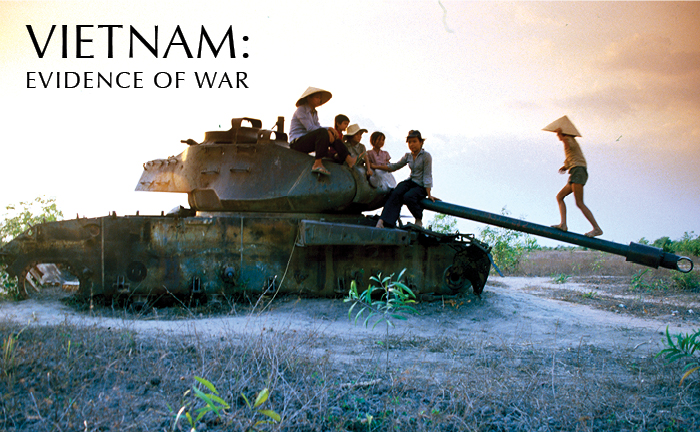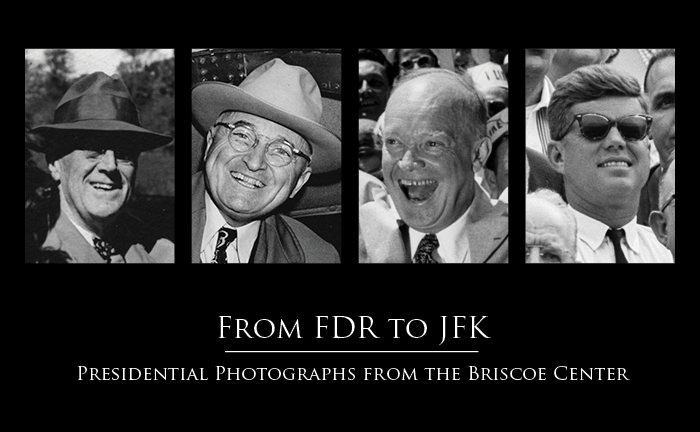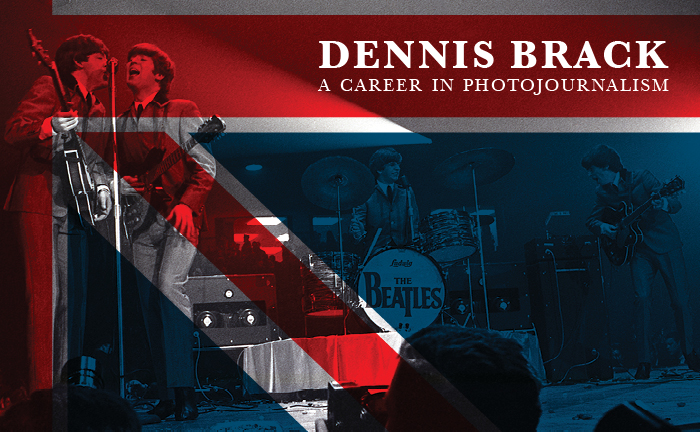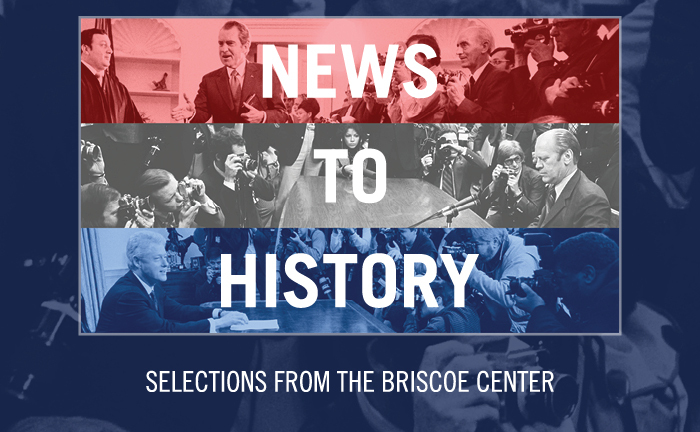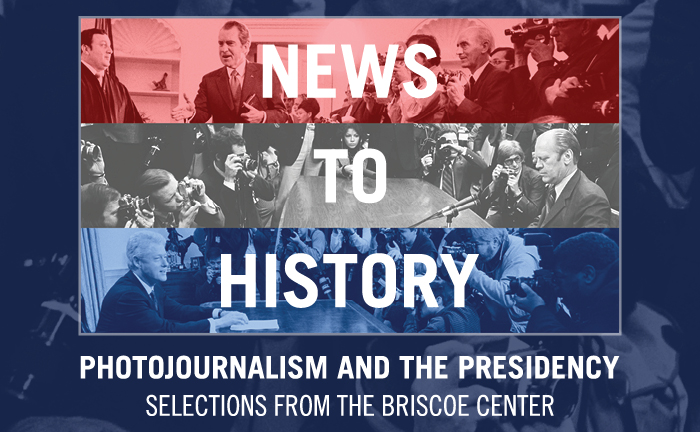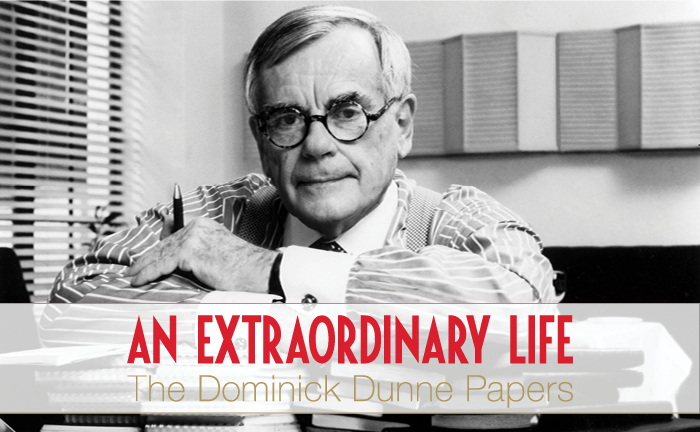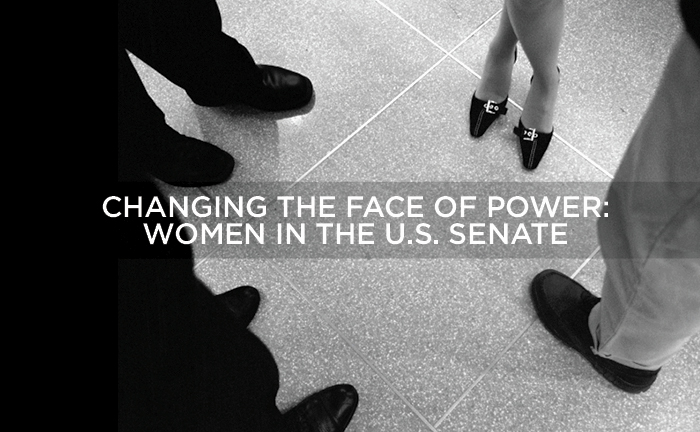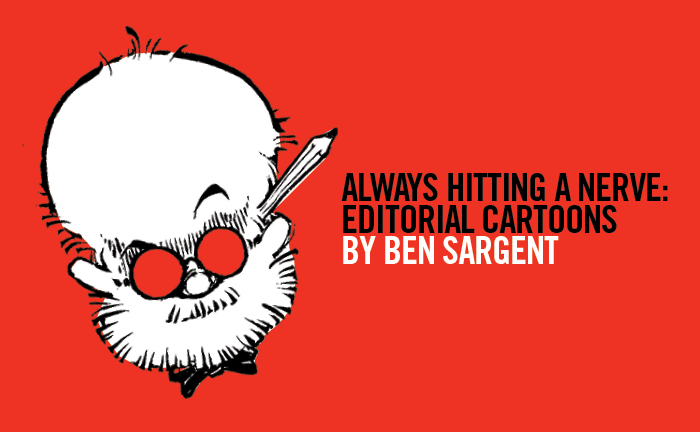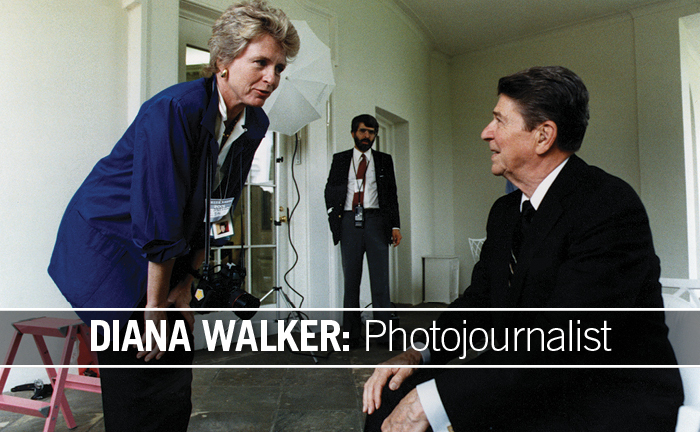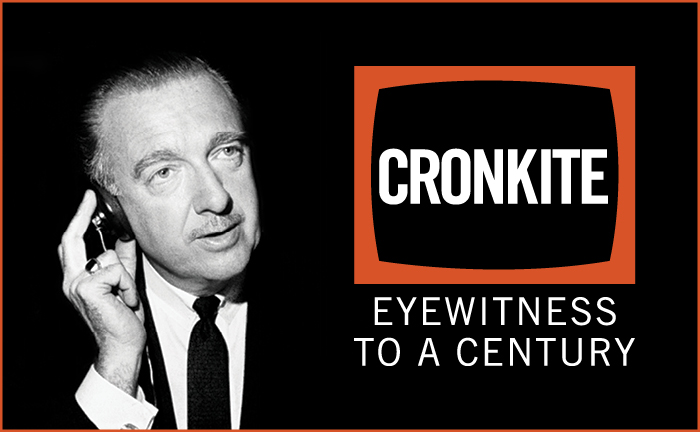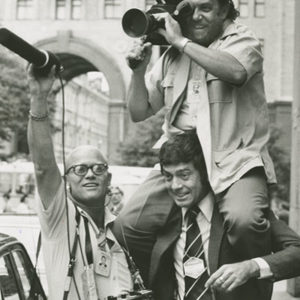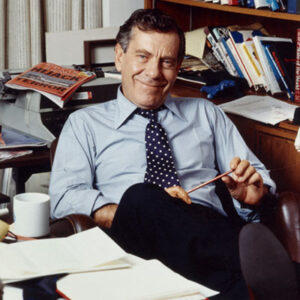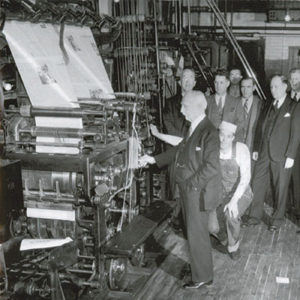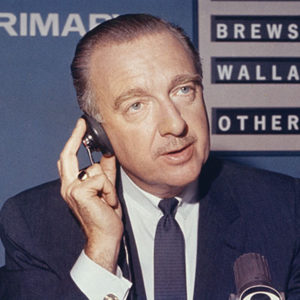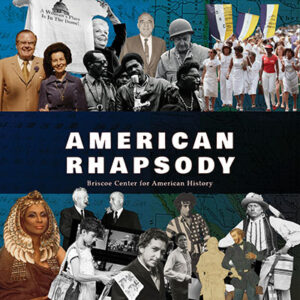The Briscoe Center is home to one of the most comprehensive collections in existence relating to news media history. Nearly three miles of archival materials across hundreds of separate collections include the personal papers of media industry pioneers and leaders, clipping and research morgues, oral histories, newspaper titles, audio and video recordings, and photographs.
Highlights include the papers of Walter Cronkite, Morley Safer, Andy Rooney, Marion Goldin, Jules Witcover, Jack Newfield, and Robert Trout, as well as one of the largest archives of American photojournalism in existence, which includes the collections of Pulitzer Prize–winners Eddie Adams, David Hume Kennerly, Steven R. Nickerson, Lucian Perkins, and Carolyn Cole. Nationally renowned columnists such as Walter Winchell, Molly Ivins, and Liz Smith; Pulitzer Prize–winning cartoonist Ben Sargent; Vanity Fair writer and television commentator Dominick Dunne; and writer and magazine editor Terry McDonell have all donated their papers to the center. Additionally, the center is the home of the records of WRR of Dallas, the first radio station to broadcast in Texas, WINGS (Women’s International News Gathering Service), and UT/KUT Longhorn Radio Network Records.
Since 1980, the Dolph Briscoe Center for American History has pursued new directions in research and collection building. One such initiative is the history of the news media, including print, radio, television, and photojournalism. The center is now home to one of the most comprehensive collections in existence relating to news media history. The center’s longtime commitment to collecting newspapers from Texas and the Deep South laid the groundwork for acquiring the archives of important state and national media professionals and organizations. The News Media History Collection is now one of the most rapidly expanding collections at the Briscoe Center. The holdings include the personal papers of media industry pioneers, research archives, newspapers, and the peerless archives of photojournalists.
News Media Professionals

Walter Cronkite Papers and CBS Evening News Archives
Foremost among the center’s news media resources are the personal papers of prominent news media professionals. It is fitting that the first such collection that the center acquired was that of CBS newsman Walter Cronkite, a former University of Texas journalism student who was one of the leading pioneers of twentieth-century broadcast television news. Cronkite’s relationship with the Briscoe Center began in 1988, when the center’s executive director, Don Carleton, established a news media history archive. Believing that his papers could become the foundation for such an archive, Cronkite enthusiastically agreed to place his papers at the center, as he was attracted to the idea of an archive that would document the reporting and editorial processes of the “news.” Though the Walter Cronkite Papers chronicle the famed journalist’s entire life and career, the majority of the papers deal with his tenure at CBS News from 1950 until his death in 2009.
The papers include research files, audio and video recordings, and clippings on space exploration, war, and politics of the 1960s and ’70s; viewer mail and correspondence with well-known figures; television and radio production materials from the CBS news series for which Cronkite reported, including You Are There, The Twentieth Century, Eyewitness to History, and CBS Reports; and source materials for Cronkite’s own media production companies. A large number of photographs document his reportage from World War II and Vietnam as well as his interviews with U.S. presidents from Harry Truman to Ronald Reagan. The papers also include Cronkite’s oral history recollections, which Carleton recorded from 1989 to 1993. Cronkite used those interviews to write his autobiography, A Reporter’s Life (1996), and to create the eight-part television series Cronkite Remembers.
The acquisition of the Cronkite Papers and the CBS Evening News Archives created a research foundation that convinced many of Cronkite’s veteran associates to place their papers at the center. They include broadcasters Robert Trout, Andy Rooney, Morley Safer, Harry Reasoner, and Dan Rather; former CBS News president Sig Mickelson; and producers Joseph and Shirley Wershba and Phillip Scheffler.
Broadcasters and Journalists
Robert Trout’s career as a radio and television broadcaster spanned almost the entire history of those media in the twentieth century. Known as “The Iron Man of Radio,” Trout could remain on the air for hours while delivering calm and accurate reports. His coverage of breaking news during World War II shaped the memories of many Americans, and his reports from political conventions and presidential inaugurations became institutions. Though Trout spent most of his sixty-year career at CBS, he also broad- cast for NBC and ABC and provided commentary on National Public Radio from 1995 until his death in November 2000.

Andy Rooney was a U.S. Army correspondent in Europe during World War II, where he first met Cronkite, and he was a regular contributor to the Army newspaper Stars and Stripes. A newspaper columnist, the author of sixteen books, and a writer and producer of numerous CBS News special reports, Rooney was best known for the first-person essays that he delivered at the conclusion of each episode of 60 Minutes, the CBS news magazine that began in 1968. The Andy Rooney Papers contain news- paper columns, video broadcasts, correspondence, photographs, and other materials from the 1940s through the 2000s.

Rooney’s longtime 60 Minutes colleague Morley Safer is one of the most respected and outstanding investigative journalists of his generation, with a wide-ranging broadcast career in Canada and at CBS News. Safer’s reporting from Vietnam in the 1960s changed not only the American public’s understanding of the Vietnam War but also how broadcast journalists covered that conflict. In donating his papers to the Briscoe Center, Safer said that the center’s collection of journalism “has no equal. It is a gateway to learning the eyewitness history of who we are, who we were, and how we perceived ourselves as a nation.” In addition to extensive documentation of Safer’s award-winning coverage of the Vietnam War, the Morley Safer Papers chronicle every other aspect of his career with CBS News.
Harry Reasoner was one of the original co-editors of 60 Minutes. He began his television broadcast career with CBS in 1956, and his writing, narrative skills, and wry but poignant news commentaries led him steadily through the ranks until he became a regular substitute for Cronkite on the CBS Evening News. In 1970 Reasoner moved to ABC News in the hopes of anchoring his own newscast, but he returned to CBS and 60 Minutes in 1978, where he remained until his retirement shortly before his death in 1991. He published several books, among them The Reasoner Report (1966) and Before the Colors Fade (1981).

Dan Rather first gained national attention for his on-the-scene reporting of the Kennedy assassination in Dallas in 1963. A rising star at CBS, he covered the White House and foreign assignments during the 1970s, and following Cronkite’s retirement in 1981, Rather succeeded him as anchorman and managing editor of the CBS Evening News, a post that Rather held for twenty-four years. His collection includes broadcast transcripts, correspondence, reporter’s notebooks, news clips, photographs, awards, videos, and publications.
Executives and Producers
Several prominent creators of CBS News programming also are featured in the News Media History Collection. The first, Sig Mickelson, was president of CBS News and vice president of CBS, Inc., as well as a teacher of journalism at several American universities and a research fellow of the Hoover Institution at Stanford. When CBS News became an autonomous corporate division in the mid-1950s, Mickelson became its first president. The Sig Mickelson Papers (1930–96) contain literary productions, research materials, correspondence, and other materials documenting Mickelson’s career as a broadcasting executive and educator, as well as his involvement in issues such as freedom of information, telecommunications legislation, freedom of the press, and the role of television in politics.

Joseph Wershba was a broadcast television pioneer and eminent CBS News producer. His career spanned more than fifty years, during which time he produced some of the most significant television news programs of the twentieth century, including See It Now, CBS Reports, and 60 Minutes. In 1996 Wershba and his wife, Shirley—a television producer with whom he collaborated on numerous assignments—donated their archives to the Briscoe Center. The Joseph and Shirley Wershba Papers (1936–2001) document the Wershbas’ careers in investigative journalism, and the papers cover political and social life in the United States between 1936 and 1993.
Phillip Scheffler retired in 2003 after more than fifty years at CBS, where his news and documentary productions received Emmy, Peabody, and Columbia-duPont awards. Scheffler began working for CBS Evening News as a writer, reporter, and editor in 1951, and in 1964 he began producing documentaries and special news broadcasts. He was appointed producer of 60 Minutes in 1971 and was promoted to senior producer in 1980. Included in Scheffler’s papers are files related to unaired programs about the failure of the tobacco industry to disclose the health risks of cigarettes.

Marion Goldin started her news media career at CBS as a research assistant for correspondent Eric Sevareid before becoming an associate producer of CBS Morning News. In 1972 Goldin joined 60 Minutes, where she would go on to win multiple Emmy awards and produce a series of hard-hitting and wide-ranging investigative pieces as well as revealing profiles of cultural icons. Apart from a hiatus in the mid-’80s when she served as senior producer for ABC News 20/20, she continued producing stories for 60 Minutes, many with Mike Wallace, until 1988. Goldin subsequently served as senior producer for the NBC newsmagazine Expose and produced and reported the PBS Frontline documentary, “Other People’s Money,” an investigation into the savings and loan scandal. Goldin earned a BA from Barnard in government and political science, and an MA in history from Harvard. A self-described “political junkie,” her tenacity, attention to historical evidence, and keen eye for politics can be found throughout her archive.
Texans: Molly Ivins, Liz Smith, and Ben Sargent
The papers of three Texans figure prominently in the News Media Collection: Molly Ivins, Liz Smith, and Ben Sargent. The papers of Molly Ivins provide insight into the career of the nationally syndicated political columnist, author, and lecturer who focused her attention on the Texas legislature and state politics, the federal government, national politics, and social issues. Ivins worked for the Texas Observer, the New York Times, the Fort Worth Star-Telegram, and National Public Radio, and she published several books, including Molly Ivins Can’t Say That, Can She? (1991). Characteristically, when Ivins placed her papers at the center, she stressed that her gift was not to be a monument to her, but a working resource for those seeking to understand the issues in which she had been involved as a progressive journalist.
A Fort Worth native, popular columnist Liz Smith graduated from the university’s School of Journalism in 1949. In New York City, she worked as a producer for NBC-TV and for Mike Wallace on CBS Radio. In the 1960s, she was the entertainment editor for Cosmopolitan magazine and Sports Illustrated. From 1976 to 2009, Smith wrote her self-titled column first for the New York Daily News, and then for Newsday and the New York Post.
Ben Sargent, who won the Pulitzer Prize in 1982, drew more than eight thousand editorial cartoons during his tenure at the Austin American-Statesman. He attracted a large and devoted following who enjoyed his unique ability to lampoon state officials and political leaders. No topic escaped his attention, from the Texas legislature to the First Amendment and from the U.S. presidency to international conflicts. As the historian H. W. Brands wrote, “Ben Sargent is a giant of editorial cartooning. [He] developed a visual style that was instantly recognizable. Sargent’s painstaking attention to detail contrasts sharply with the primitivism that increasingly passed for cartoon art during the late twentieth century.” Among Sargent’s publications are Texas Statehouse Blues (1980) and Big Brother Blues: The Editorial Cartoons of Ben Sargent (1984).
Dominick Dunne

In 2011 the Briscoe Center acquired the papers of Dominick Dunne, an acclaimed journalist and writer known for his contributions to Vanity Fair magazine and his work on Court TV. In addition to his coverage of society and celebrities, Dunne chronicled high-profile criminal trials and was an outspoken advocate for victims’ rights, motivated in part by the murder of his own daughter. The Dunne Papers include his detailed criminal trial research files covering prominent cases like those of the Menendez brothers, O. J. Simpson, Phil Spector, and Claus von Bülow. The voluminous correspondence files include letters from prominent public figures, such as Elizabeth Taylor, Nancy Reagan, Stephen Sondheim, Hillary Clinton, and Tina Brown. Recordings of Dunne’s numerous television appearances, including his popular show on Court TV, Dominick Dunne’s Power, Privilege, and Justice, also are included.
Wayne Barrett
A renowned investigative reporter for New York City’s Village Voice (1973-2011), Wayne Barrett’s work targeted an entire generation of city leadership. Barrett’s preferred focus was political corruption and documenting the missteps of New York’s elite around issues including land development and real estate, crime and policing, health care, education, and pollution. His groundbreaking work into the early career of Donald Trump made him a latter-day authority for a new generation of reporters interested in the character and psyche of America’s 45th president. Aside from Trump, some of his most important work focused on the careers of Hillary Clinton, mayors Rudy Giuliani and Ed Koch, and Governor Andrew Cuomo. The Wayne Barrett Papers consist mainly of research notes related to his investigative reporting. Materials include articles, clippings, correspondence, research notes, court documents, manuscript drafts, campaign records, and interview transcripts. Barrett also wrote extensive notes on many of the manila folders in which he stored his research materials.
Print and Radio
The Briscoe Center steadily has built its newspaper holdings during the past four decades, and the Texas Newspaper Collection now contains more than 5,100 titles. More than 3,000 of them are from Texas, making the collection the largest Texas newspaper collection in existence. Titles include some of the earliest newspapers published in Texas, such as the Telegraph and Texas Register (1835) and the Clarksville Northern Standard (1842). The center also has newspapers that were published in every state of the Confederacy from the 1790s through the early 1900s, including rare editions from antebellum Louisiana and Mississippi. Moreover, the National Endowment for the Humanities–funded Texas Newspaper Project has preserved and provided access to Texas newspapers by microfilming more than one million pages of newsprint from nearly 200 Texas newspapers.
The center also has sought the archives of news media industries. The records of magazines, newspapers, television, and radio organizations offer valuable insights into the process of media production. Several collections are linked to national news gathering corporations, including the CBS Evening News Archive (1962– 1981), which contains scripts, memoranda, publicity, and other materials that were assembled during Cronkite’s tenure as managing editor of the CBS Evening News. The research archives, or “morgues,” of the New York Times (1909–89), the New York Herald Tribune (1910–67), and the New York Journal American (1900–66), as well as the Newsweek magazine research archive, contain millions of clippings, pamphlets, and other sources that provide a wealth of never-before- seen reporters’ records.

The Briscoe Center also has pursued the archives of the news media industry in Texas, including the Texas Professional Communicators Records (1910–present), which document the organizational history of the Texas Press Association; the UT/KUT Longhorn Radio Network Records (1961–2000), containing the master recordings of programs distributed by National Public Radio station KUT at the university; and WINGS (Women’s International News Gathering Service, 1955–97), which contains correspondence, notes, diaries, audiotapes, and other items documenting the development of the feminist-oriented broadcast news service that radio journalists Katherine Davenport and Frieda Werden established in 1986.
Materials in Action
Over the years, the Briscoe Center has sponsored numerous exhibitions, programs, symposia, and publications to bring greater public awareness to its News Media Collection. Among those are the John Henry Faulk Conference on First Amendment issues, which began in 1992; a symposium and exhibition on Robert Trout in 2000; the book Conversations with Cronkite (2010), based on Carleton’s oral history interviews with the veteran newsman; a major exhibit, Cronkite: Eyewitness to a Century, at the Lyndon B. Johnson Presidential Library (2010), and The Pioneers Who Changed TV News (2018) an exhibit on the evolution of news media that focused on the groundbreaking show 60 Minutes.
The archives in the News Media Collection affirm the reputation of the Dolph Briscoe Center for American History as a leading repository for significant documents that enhance our understanding of the role of the news media as well as its impact on all segments of American society.
Adapted from The Collections: The University of Texas at Austin, 2015. Updated 2020.
Our collections inspire our own projects, including books, exhibits, programs, films, and educational materials.
Researchers often rely upon the materials produced by journalists—history’s “first responders”—to help them make sense of historic events. Archival materials such as documents, photographs, recordings, correspondence, and other objects allow students, scholars, researchers, and visitors to engage more directly with history.
The Briscoe Center seeks to solidify our leadership position in collecting, preserving, and making the history of news media available to a wide audience with an endowment to fund the collection in perpetuity.
The endowment will:
- support several key collection specific positions, that can be named by the donor, including a curator, an archivist, student interns, and research fellowships dedicated to news media history;
- provide funding to preserve material in the collections and to acquire the papers of journalists, broadcasters, producers, and related news media organizations;
- generate recurring resources to support activities and programs that use the collections.
Learn more about the news media history endowment and how you can help.
Banner image: Walter Cronkite reporting on moon landing for CBS News, July 20,1969. Walter Cronkite Papers. Image detail from di_05887.





